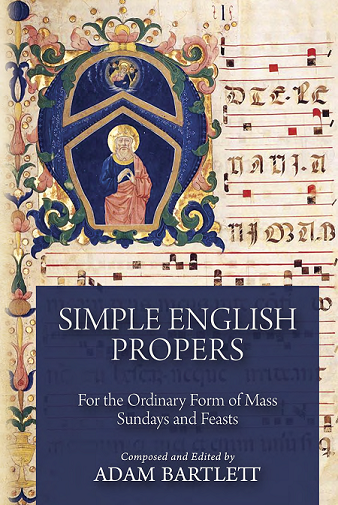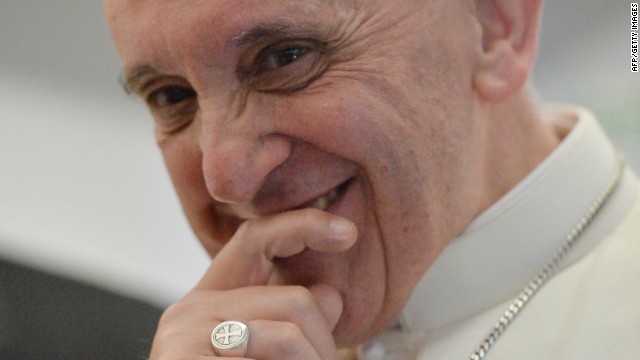If you have been around the conversations within the Church Music Association of America for any length of time have, you have surely encountered discussion of an issue that manifests itself most often in the following question:
Why don’t the antiphons in Simple English Propers match the antiphons in our missalettes in the pews, and the ones in the Roman Missal?
(If I had a nickel for every time I have answered this question, I surely could be enjoying a comfortable retirement on a distant tropical island right now!)
The simple answer to the question is this: Simple English Propers sets to music the antiphons of the Graduale Romanum in English translation, while most popular publications (such as Magnificat, various hand missals, the ubiquitous disposable pew missals, etc.) usually print the antiphons of the Roman Missal. The antiphons of the Roman Missal and Graduale Romanum, while they are often the same, are in various cases different sets of proper texts. A neutral translation of the Graduale Romanum (from the Solesmes Gregorian Missal) was used in SEP, which could be freely shared online without copyright restriction, and as an unfortunate result, the Roman Missal translations were not used where the Missal and Graduale are in fact the same.
There are numerous further explanations and speculative analyses of the phenomenon of Roman Missal vs. Graduale Romanum propers, all of which can easily be found through a quick web search, and most of which are beyond the grasp, care or interest of those who are working in real-world, parish settings.
The conventional answer, common practice, and liturgical law
The conventional conclusion that the CMAA has maintained at for many years now is that when the 1969 Roman Missal was promulgated, the antiphons of the Roman Missal (including only the Entrance and Communion Antiphons, not the Offertory Antiphon) were intended to be spoken when the antiphon of the Graduale Romanum or Graduale Simplex was not sung. This distinction is clear in the rubrics of the universal law of the GIRM to this day.
The same rubrics, however, stated that “another suitable song” could be sung in place of the antiphons of the Graduale Romanum or Graduale Simplex, and we all know that this is the source of the proliferation of singing just about any kind of hymn or song at the Entrance, Offertory and Communion processions of the Mass in place of the antiphons that are appointed by the Church to be sung at these times.
Since we have never been given official, approved English translations of the Graduale Romanum, in practice, those who wished to sing proper antiphons in English defaulted to singing the approved translations found in the Roman Missal, and this practice has gone on for more than 40 years in certain locales in the English speaking world. In no way was this ever illicit, since the antiphons of the Roman Missal are perhaps among the best “other suitable songs” that can be imagined!
Because of the success of this practice, the Bishops of the United States of America voted to include the singing of the Roman Missal antiphons as part of the first option in the Roman Missal, Third Edition (see GIRM 48 and 87).
Thus, in particular law (which canonically trumps universal law) in the United States of America today, the antiphons of the Roman Missal form a part of the first option for the sung texts of the Entrance, Offertory and Communion processions, along side the antiphons and psalms of the Graduale Romanum, as set to music there or in another musical setting.
This is binding liturgical law for all faithful and obedient Catholics in the United States of America.
Roman Missal antiphons in Rome
It is striking to observe an unconventional but illustrative development in the papal liturgies in Rome this year: The Entrance Antiphon that is being sung in this year’s Chrism Mass in St. Peter’s Basilica is not the antiphon prescribed in the Graduale Romanum (which is Dilexisti iustitiam), but is the antiphon of the Roman Missal! Further, it appears to be in a newly composed, “neo-Gregorian” musical setting:
 |
| H/T Steven van Roode, musicasacra.com/forum |
In fact, in a particular way, this effort is taking form in a brand new English chant resource that will begin shipping in two weeks.
It is the Lumen Christi Simple Gradual, edited by myself, and published by Illuminare Publications (learn more here). This resource is the true successor and fulfillment of its predecessor, Simple English Propers (which also composed and edited by myself).
 There is no other resource like this. It will be available in both Assembly and Choir editions, and it contains the fully sung Order of Mass in English, eighteen Mass Ordinaries in English and Latin chant, and a complete repertoire of simple English chant settings with texts that are drawn from the Church’s primary sources for the sung liturgy—the Graduale Romanum, Roman Missal, and Graduale Simplex—and arranged for successful parish use, according to prescripts of the General Instruction of the Roman Missal, Musicam Sacram, and Sacrosanctum Concilium.
There is no other resource like this. It will be available in both Assembly and Choir editions, and it contains the fully sung Order of Mass in English, eighteen Mass Ordinaries in English and Latin chant, and a complete repertoire of simple English chant settings with texts that are drawn from the Church’s primary sources for the sung liturgy—the Graduale Romanum, Roman Missal, and Graduale Simplex—and arranged for successful parish use, according to prescripts of the General Instruction of the Roman Missal, Musicam Sacram, and Sacrosanctum Concilium.
The source translation that is used is the Roman Missal, Third Edition, and new translations have been made where they are needed (e.g. the Offertory Antiphons, among others), and approved for liturgical use by the USCCB Secretariat for Divine Worship and by episcopal imprimatur. This assures the greatest textual continuity between the texts of the Missal and Graduale, and accords with the requirements of Liturgiam Authenticam.
It is arranged with the needs of todays parishes in mind, and it builds not only upon the experience of the past 5 years, but also upon the wisdom of the past 50 years. The musical settings that the Lumen Christi Simple Gradual contains already form a part of the core repertoire of numerous parishes across the English-speaking world, and early online releases have helped hone and perfect the chant settings and their arrangement over the course of the past three years.







